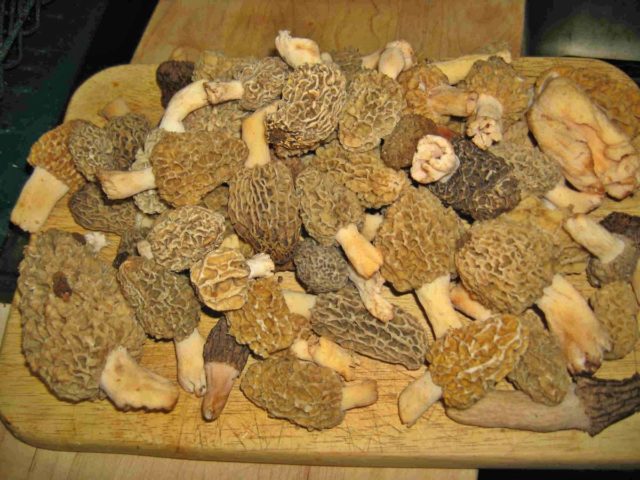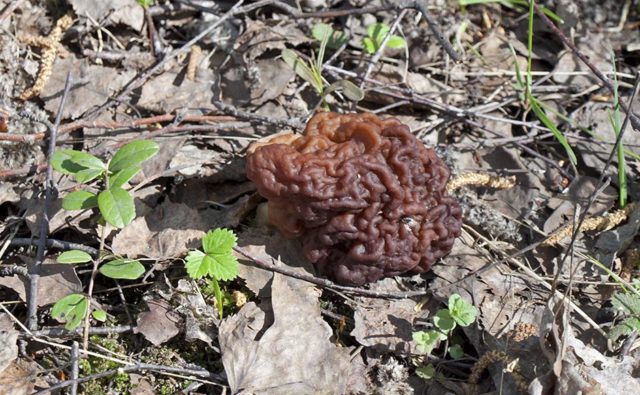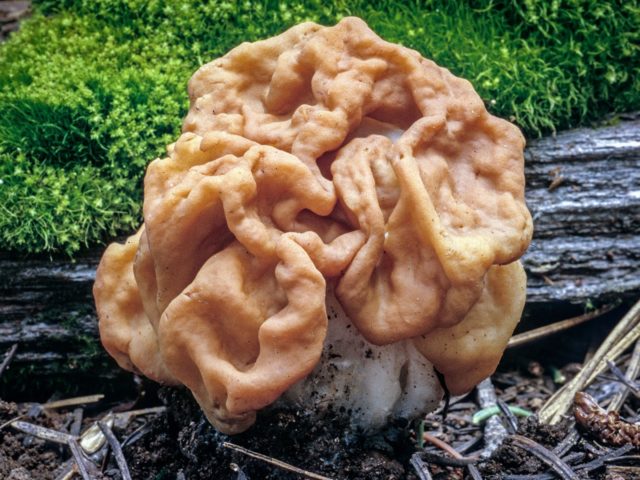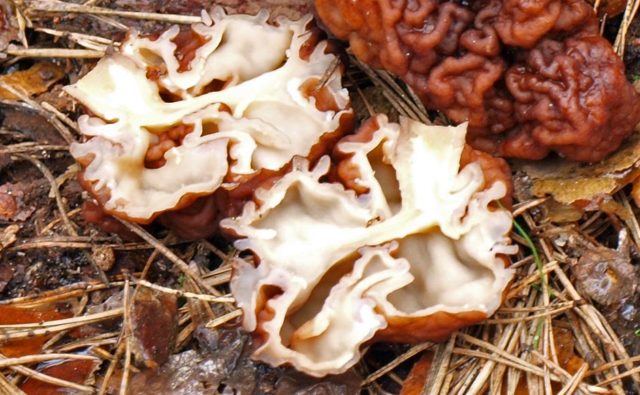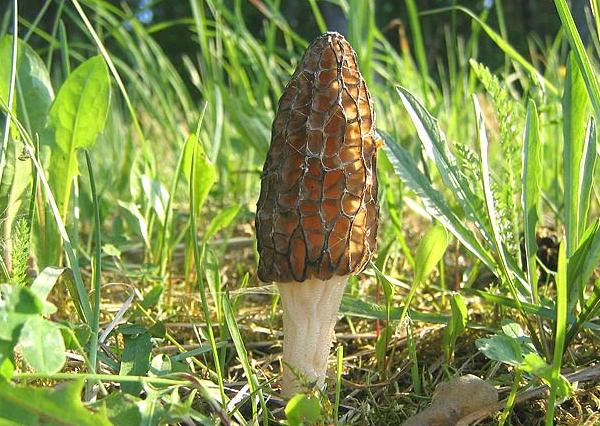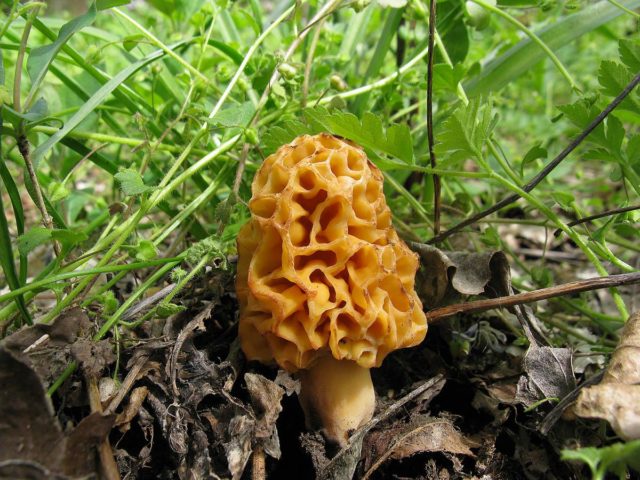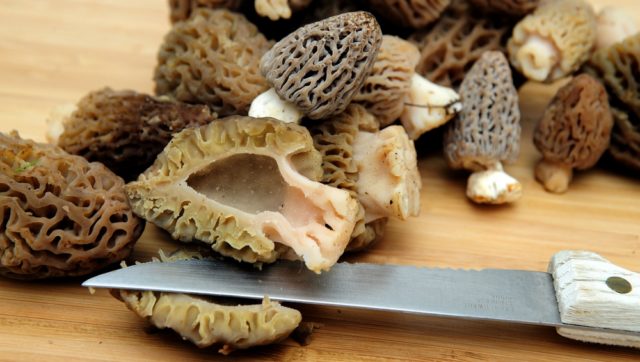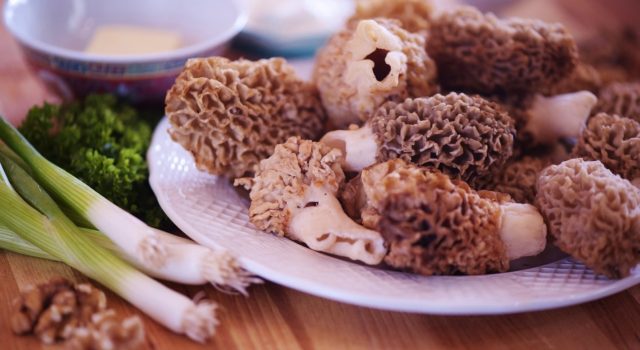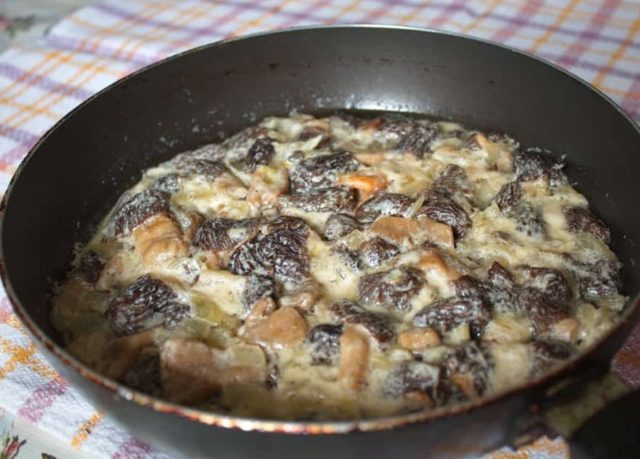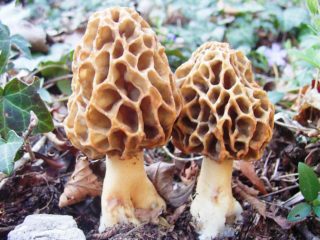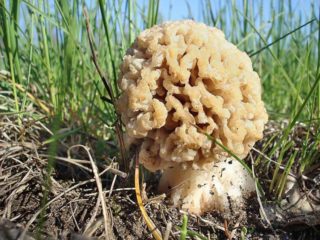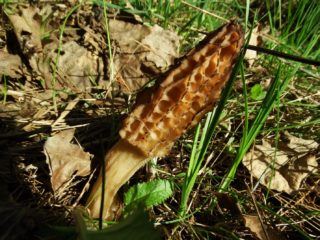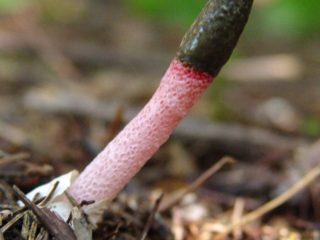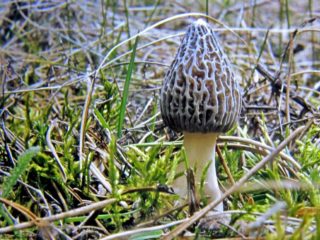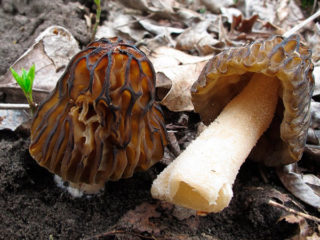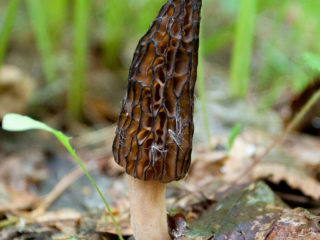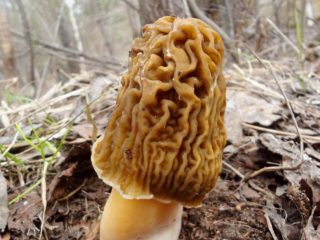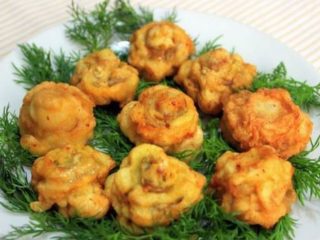Content
- 1 Where do edible morels grow?
- 2 What do edible morels look like?
- 3 Is it possible to eat the common morel (edible)
- 4 Taste qualities of the real morel mushroom (edible)
- 5 Benefits and harm to the body
- 6 How to distinguish edible morels from false look-alikes
- 7 When to collect edible morel mushrooms
- 8 Rules for collecting edible morels
- 9 How to cook edible morel mushrooms
- 10 Conclusion
Morels are the first spring mushrooms that appear after the snow melts and the soil cover dries out. They belong to the Morel family and are represented by different species that do not differ significantly from each other in taste. Since ancient times in Rus', the edible morel, or real morel, has been revered and used to prepare various dishes. Now in America and European countries it is considered a delicacy, the taste is in no way inferior to truffle, so it is specially cultivated by planting mushroom plantations.
Where do edible morels grow?
Edible morels can be found in coniferous and deciduous forests, on forest edges, in ravines, in clearings and clearings in the central and southern regions of Russia. They grow in fairly light, warm places in alder, birch, oak and mixed forests, as well as in areas after fires. They often actively spread even in city parks and forest belts. In the southern regions of the country they prefer to grow in gardens and vegetable gardens. Various species of these mushrooms are often found in the forests and mountainous areas of North America, Europe, Australia and Asia.
What do edible morels look like?
A real edible morel mushroom, as in the photo, has a spherical, rounded cap of brown or gray-brown color, which is distinguished by an uneven, cellular, pronounced tortuous surface.
Along the edges, the cap is connected to a notched, white or yellowish stalk that widens towards the bottom. The edible morel is completely hollow inside, so its weight is very small. Even after collecting a whole basket, you may not feel the mass of the forest “harvest”. The pulp of the mushroom is brittle and thin, and has a pleasant mushroom aroma. The height of one specimen is about 15 cm. The length of the ovoid cap is 5 cm, and its diameter is 4 - 5 cm. At the same time, the length of the cap and the stem are almost proportional.
Is it possible to eat the common morel (edible)
The common morel is a conditionally edible mushroom. It can be eaten only after a sufficiently long heat treatment. All varieties of morels - conical, tender, delicacy - are edible and widely consumed in different countries of the world.You can also find frozen, canned or dried members of the family on sale. First they are boiled for 30 minutes. and only then baked, fried or stewed.
Taste qualities of the real morel mushroom (edible)
The first edible morels of spring have excellent taste, despite their strange, somewhat original appearance. Their flesh is tender, distinguished by an incredibly pleasant mushroom taste and an unusual forest aroma of spring thawed patches and last year's grass. The thin, crispy white flesh with a distinct aroma is appreciated by gourmets, and proper preparation of these mushrooms allows you to create true culinary masterpieces.
Benefits and harm to the body
Edible morels benefit the human body because they contain:
- substance FD4, a type of polysaccharide that strengthens the eye muscles and prevents clouding of the lens;
- active components that help improve immunity;
- vitamins and minerals.
In folk medicine, a decoction of mushrooms is used to improve the functionality of the gastrointestinal tract and increase appetite. Medicines used in official medicine for the treatment of rheumatism and joint diseases are prepared from them. The ability of these mushrooms to cleanse the blood and lymphatic system is known.
When prepared correctly and following heat treatment standards, mushrooms are not harmful to the human body. The exception is individual intolerance to the product. They must be collected in environmentally friendly areas. However, you should not overuse edible morels.
How to distinguish edible morels from false look-alikes
The most dangerous poisonous counterparts of edible representatives of the morel family are the lines:
- ordinary;
- giant.
However, if the giant type is distinguished by its large dimensions, then with an ordinary stitch the situation is much more complicated. Both mushrooms contain a toxic substance - gyromitrin. However, in edible morels its amount is minimal, while in strings the rate of poison is so high that it is dangerous to human health and life. Related mushrooms are very similar in appearance, although upon careful examination there are still differences. The lines have a very short, almost invisible stem, in contrast to edible specimens, the length of the cap and stem of which are almost proportional. Morels are characterized by a hollow interior that can be clearly seen when broken.
The lines have a twisted pulp inside.
The cap of edible mushrooms is completely covered with winding cells; at the top it is folded, similar in appearance to the kernel of a walnut. The lines grow in the same place - in clearings, soil cleared of turf, on the edges of mixed forests and fires.
How not to make mistakes when searching for edible morels, you can learn from the video:
When to collect edible morel mushrooms
Edible morels are collected at the end of April and throughout May in deciduous floodplains, on the edges and in ravines, in recently burned areas. The first mushrooms of the season are classified as conditionally edible. That is, for safety, certain rules must be followed when preparing them.Most often they grow singly on forest edges and lawns in places with grass. In favorable growing conditions, representatives settle in small groups.
Rules for collecting edible morels
“Quiet spring hunting” after a long winter is the joy of every mushroom picker. In sun-warmed places in ravines, under trees and shrubs in deciduous forests, edible morels are found, as in the photo below. They prefer fertile, naturally fertilized soils. If you come across one mushroom, then you should search the entire clearing around. Often, edible representatives of morels are hidden in the grass, where they can be quite difficult to find. It is easier to collect mushrooms in open areas after fires. For cutting, you need a sharp knife, which is used to cut the stem of the mushroom at ground level. Only young, not overgrown specimens are suitable for food.
There are other varieties of edible mushrooms of the Morel family:
- Conical morel – grows in mixed forests in open clearings or along sandy paths in large groups. The conical type has a more elongated cone-like shape and a rather dark cap, and the flesh is very thin and crisp.
- Morel cap. This species settles in illuminated places along the sides of roads, clearings, and burnt areas. The stem of the mushroom is very small, so it looks like one cap, which is where the name of the species comes from. The taste of such representatives is distinguished by tenderness, but the aroma is weaker than that of other morels.
Important! All varieties of edible morels are always hollow when cut.
How to cook edible morel mushrooms
The secret to preparing spring mushrooms is to pre-boil them for half an hour. After this, the broth is drained and not used for food, and the mushrooms are thoroughly washed with cold water. This preparation eliminates the risk of poisoning.
Next, the product is subjected to culinary processing:
- stewing;
- frying;
- preparing mushroom sauce.
You can also use them as a filling for pies and pies.
A delicious dish that will be appreciated by real gourmets are morels stewed in sour cream or milk. For this:
- Boiled mushrooms are fried over maximum heat along with onions, salt and pepper.
- Dust lightly with flour.
- Add milk, sour cream or a mixture of them with a few tablespoons of butter.
- Let it boil a little and remove from heat.
For preparations for the winter, a method such as drying is used, the period of which should take at least three months. To prepare culinary dishes in winter, dried mushrooms are soaked, boiled and then cooked in accordance with the recipe. Natural seasoning for any dish is made from mushroom powder, which is a very strong flavoring. To do this, dried mushrooms are not soaked, but ground into a dry mixture. In any of the listed types of processing, they are a real delicacy.
Conclusion
The edible morel should not be ignored, because it is not only tasty, but also good for health. If you follow the rules of collection and preparation, it will not cause any harm to the body, much less poisoning.Well, a spring hike in the forest after a long winter will also bring a lot of pleasant impressions.

